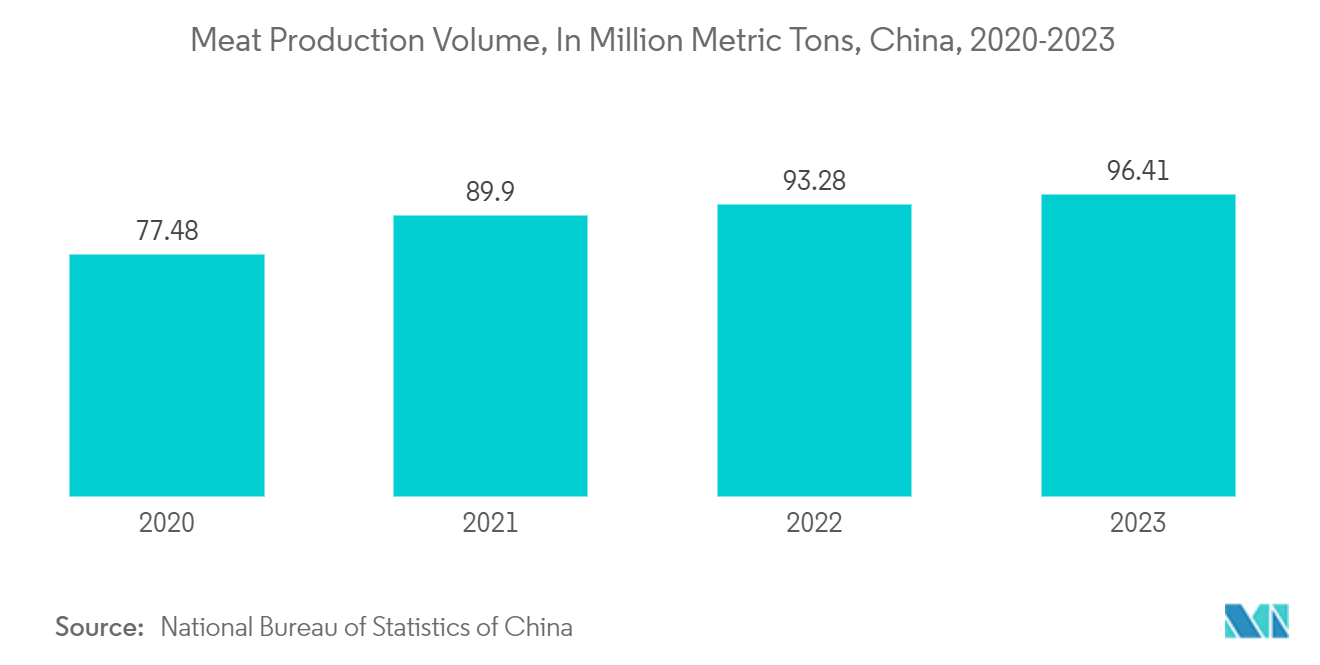Market Trends of China Flexible Plastic Packaging Industry
Retail E-commerce is Expected to Propel the Market's Growth
- China has risen as a global e-commerce leader, propelled by various factors. With a population surpassing 1.4 billion, the nation presents a vast consumer base starving for products and services. Bolstered by rapid urbanization and an expanding middle class, Chinese consumers increasingly favor digital transactions, propelling the online retail sector.
- According to the International Trade Administration (ITA), in 2023, domestic giants primarily lead the Chinese e-commerce market: Alibaba's Taobao and Tmall command a 50.8% market share, trailed by JD.com at 15.9% and Pinduoduo at 13.2%. Beyond these, several other platforms, such as Kaola, Little Red Book (Xiaohongshu), Suning, and Vipshop, collectively hold a substantial market share. The landscape of platform selection is notably fluid, with choices differing significantly based on the sector, target demographic, and regional nuances.
- The online grocery market is surging in the country due to various factors, such as urbanization, which continues the demand for convenience and efficiency. Notably, China's online community, especially in lower-tier cities, is experiencing a growing purchasing power. China's fast-paced lifestyle, robust economy, and stringent food safety standards fuel a rising appetite for packaged foods.
- Concurrently, the country's increasing internet penetration drives a significant portion of the population toward online grocery retail. Moreover, as China sees a continual influx of younger generations, their increasing spending power is poised to amplify the market's growth trajectory as they mature. Also, according to the National Bureau of Statistics of China, the retail sales of consumer goods in China were CNY 39.2 trillion (USD 5.20 trillion) in 2020 and reached CNY 47.1 trillion (USD 6.49 trillion) in 2023. Such an increase would further drive the market's growth for flexible plastic packaging.
- Moreover, JD.com, the Chinese e-commerce player, is intensifying its focus on its online grocery division and expanding its reach into lower-tier markets. This strategic shift comes in response to a sluggish economy, prompting China's largest private enterprise to pivot toward fresh avenues of growth. Such initiatives would further drive flexible plastic packaging in the country.

The Chinese Food Industry is Anticipated to Witness Growth
- The Chinese food industry is rapidly expanding, offering a lucrative opening for foreign brands eyeing regional expansion. With a burgeoning middle class and shifting consumer preferences, the market is mature with opportunities for global food producers. Adapting to local tastes, embracing emerging trends, and understanding evolving consumer preferences are vital strategies for foreign brands looking to thrive in this dynamic landscape.
- According to the US Department of Agriculture (USDA), the Chinese bakery sector is experiencing rapid growth, driven by a shift toward Westernized lifestyles and diets and a surging appetite for convenience. As urban Chinese adopt more Western habits and their incomes rise, baked goods prominently displayed in supermarkets and hypermarkets are witnessing robust retail performance.
- Notably, western pastries are increasingly edging out traditional Chinese options, a staple in the daily diets of many urban middle-class consumers. Baked goods, especially cakes, pies, and bread, are favored during breakfast, as snacks, and at celebratory events. The rise in demand for baked food would drive the flexible plastic packaging market in China.
- Further, China's rise as a significant meat producer, consumer, and importer opens export avenues for the United States and other global producers. While pork demand remains relatively stable regardless of income levels, poultry, beef, and mutton see increased consumption with rising incomes. Drawing from historical trends in meat consumption, income levels, and pricing, per capita meat consumption in China is forecasted to increase by 23 kilograms (using consumer purchase data) and 21 kilograms from 2022 to 2031.
- According to the National Bureau of Statistics of China, the meat production volume reached 96.41 million metric tons in 2023 and it increased from 77.48 million metric tons in 2020. Therefore, an increase in meat consumption would further create opportunities for the Chinese flexible plastic packaging market.


